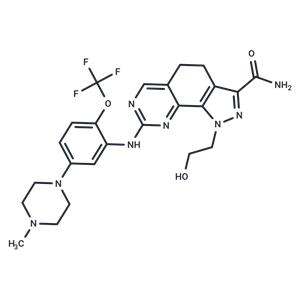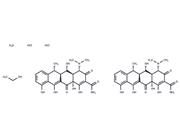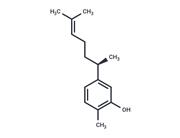| Name | Onvansertib |
| Description | Onvansertib (NMS-1286937) is a PLK1 inhibitor (IC50=2 nM) with high selectivity and oral activity. Onvansertib has antitumor activity and inhibits tumor growth. |
| Cell Research | Cells are seeded into 96- or 384-well plates at densities ranging from 10,000 to 30,000/cm2 for adherent and 100,000/mL for nonadherent cells in appropriate medium supplemented with 10% fetal calf serum. After 24 hours, cells were treated in duplicate with serial dilutions of NMS-P937, and 72 hours later, the viable cell number was assessed by the CellTiter-Glo Assay (Promega). IC50 values were calculated with a sigmoidal fitting algorithm (Assay Explorer MDL). Experiments were carried out independently at least twice.(Only for Reference) |
| Kinase Assay | Kinase profile: The inhibitory activity of putative kinase inhibitors and the potency of selected compounds are determined using a trans-phosphorylation assay. Specific peptide or protein substrates are trans-phosphorylated by their specific serine-threonine or tyrosine kinase, in the presence of ATP traced with 33P-γ-ATP, at optimized buffer and cofactors conditions. At the end of the phosphorylation reaction, more than 98% unlabeled ATP and radioactive ATP is captured by adding an excess of the ion exchange dowex resin; the resin then settles down to the bottom of the reaction plate by gravity. Supernatant, containing the phosphorylated substrate, is subsequently withdrawn and transferred into a counting plate, followed by evaluation by b-counting. Inhibitory potency evaluation for all the tested kinases was performed at 25 °C using a 60 min end-point assay where the concentrations of ATP and substrates are kept equal to 2 x αKm and saturated (>5 x αKm), respectively. |
| In vitro | METHODS: 137 tumor cells were treated with Onvansertib for 72 h. Cell viability was measured by CellTiter-Glo Assay.
RESULTS: Sixty of the 137 cell lines had IC50 values below 100 nmol/L, and only 9 cell lines had IC50 values above 1 µmol/L, indicating a wide range of activity. [1]
METHODS: Cisplatin-sensitive and -resistant CAL33 were treated with Onvansertib (25-50 nM) for 24 days, and the cell cycle was examined by Flow cytometry.
RESULTS: Onvansertib treatment induced accumulation of all sensitive and resistant CAL33 cells in G2/M phase in a dose-dependent manner. [2] |
| In vivo | METHODS: To test the antitumor activity in vivo, Onvansertib (60 mg/kg) was administered orally to Hsd, athymic nu/nu mice bearing HCT116 xenografts once daily for eight days.
RESULTS: Onvansertib was able to achieve good antitumor activity with minimal weight loss and inhibited tumor growth to a considerable extent with a TGI of 79%. [1] |
| Storage | Powder: -20°C for 3 years | In solvent: -80°C for 1 year | Shipping with blue ice. |
| Solubility Information | DMSO : 55 mg/mL (103.28 mM)
Ethanol : 10 mg/mL (18.77 mM), Heating is recommended.
H2O : < 1 mg/mL (insoluble or slightly soluble)
|
| Keywords | NMS 1286937 | inhibit | Inhibitor | Apoptosis | NMS-P 937 | NMS1286937 | Onvansertib | Polo-like Kinase (PLK) | NMS-P-937 |
| Inhibitors Related | Stavudine | 5-Fluorouracil | Acetylcysteine | Kaempferol | Myricetin | Sodium 4-phenylbutyrate | L-Ascorbic acid | Dextran sulfate sodium salt (MW 4500-5500) | Metronidazole | Sorafenib | Tributyrin | Lidocaine hydrochloride |
| Related Compound Libraries | Highly Selective Inhibitor Library | Bioactive Compound Library | Kinase Inhibitor Library | Anti-Cancer Clinical Compound Library | Drug Repurposing Compound Library | Inhibitor Library | Anti-Aging Compound Library | Bioactive Compounds Library Max | Anti-Cancer Drug Library | Anti-Cancer Active Compound Library |

 United States
United States



